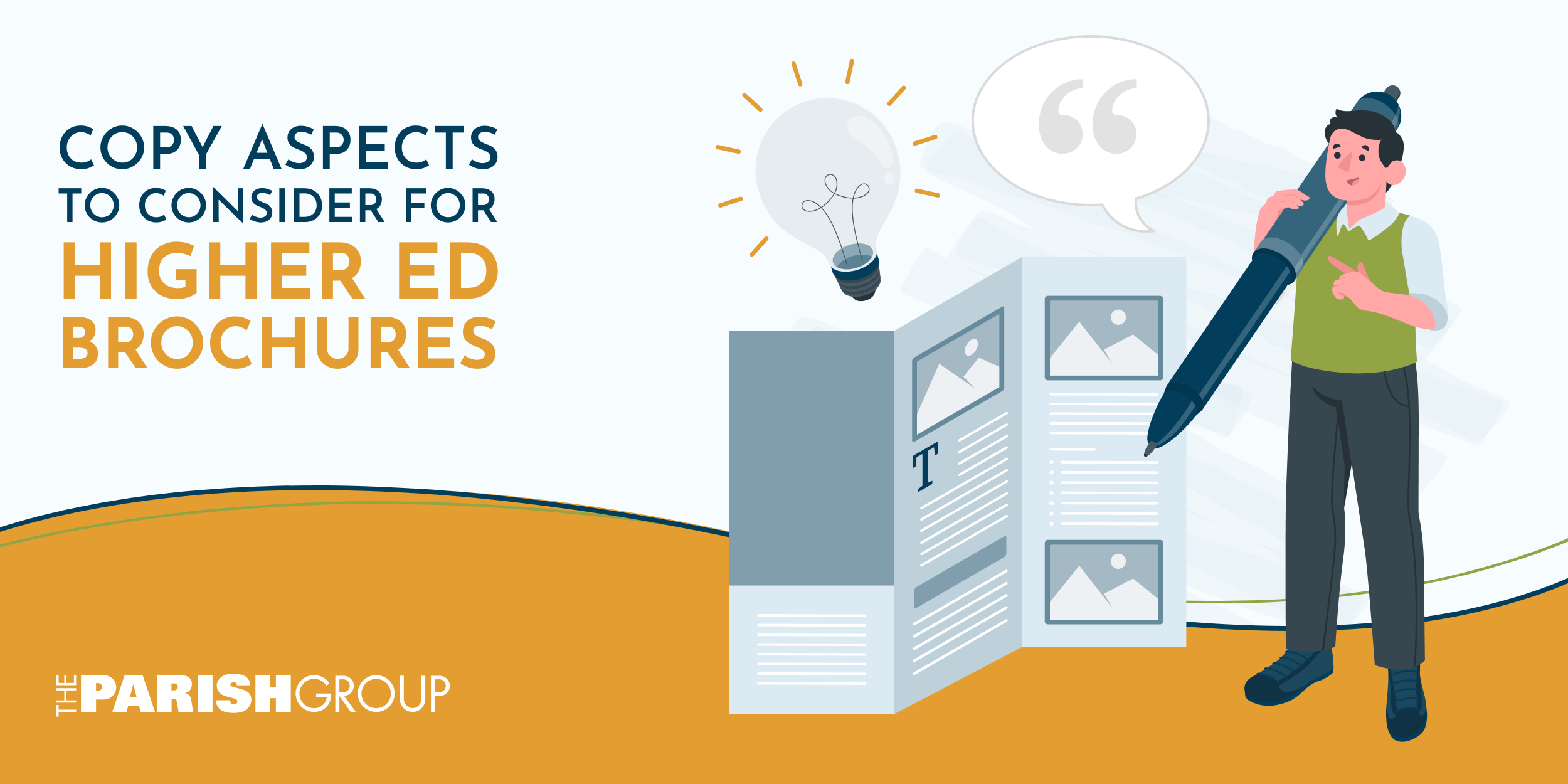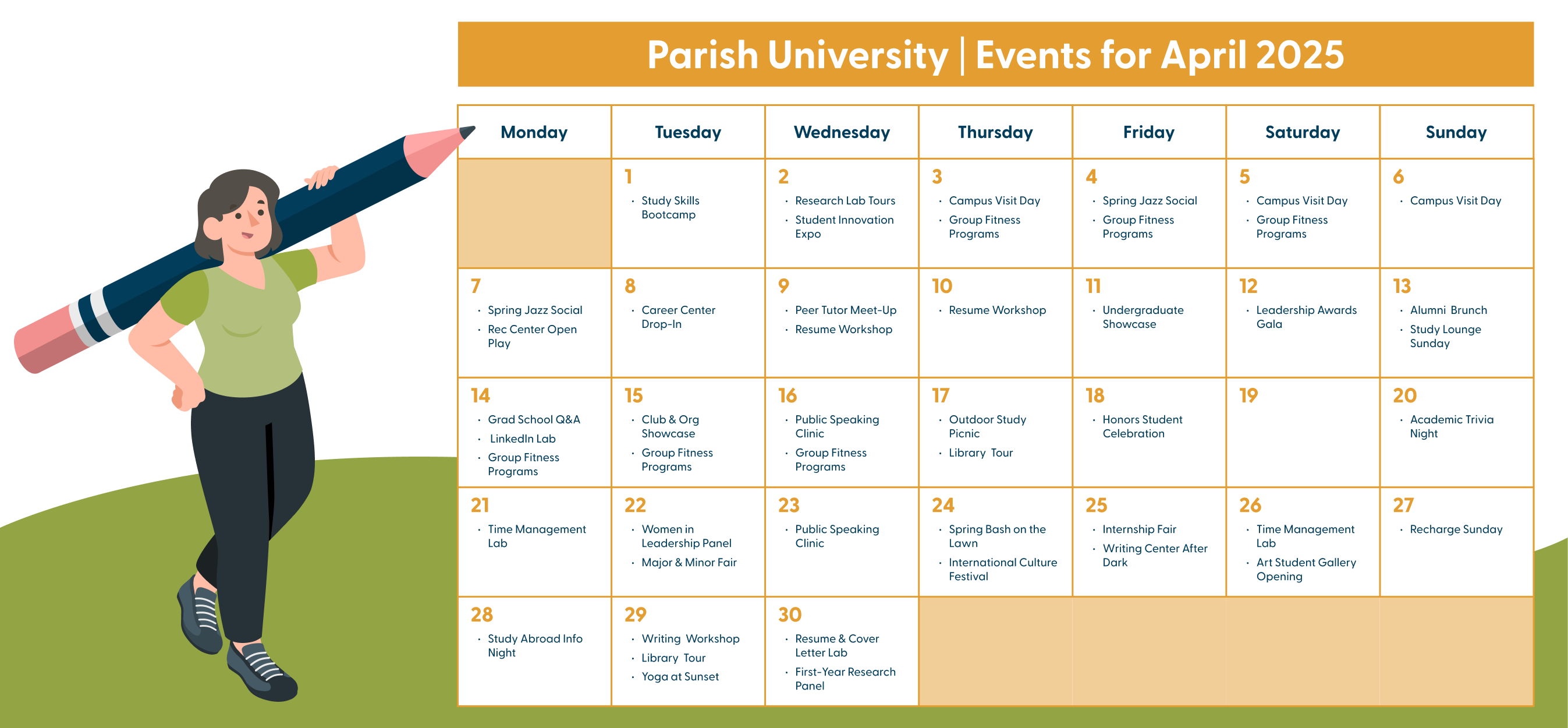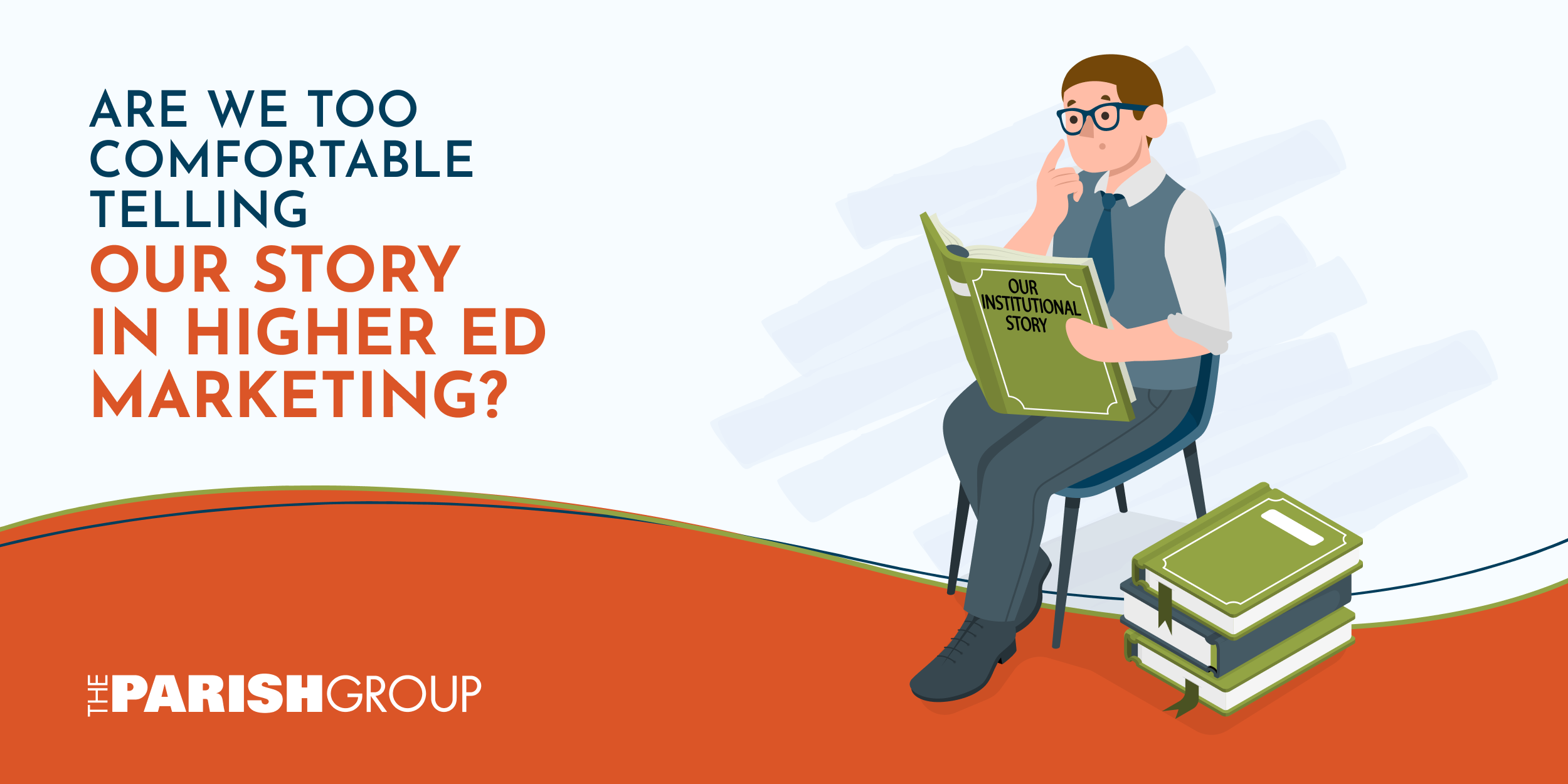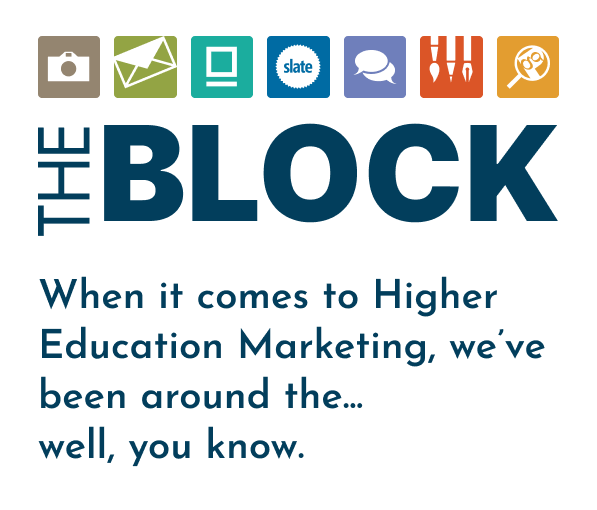
How do you tell the story of your institution through print?
A few weeks ago, we discussed important design elements to keep in mind when creating a brochure for your higher education institution. This week, we’re switching focus to copy.
Readability & Scannability
Think about how people consume your brochures, postcards, and letters. While we’d love to flatter ourselves and believe students soak up each and every line, let’s be realistic—on first read, a majority of people skim print pieces.
Think of it like a speed date. They’re looking for specific information and don’t want to waste the whole dinner not knowing whether there is a connection. This especially relates to publications sent out in the first stages of courtship—cough, we mean prospect development.
Here are some of the best ways to make your print pieces easier to skim and scan.
First, lists are your friend. Bullet points, numerical lists, and the like can offer lots of information in an easy-to-visually-digest manner.
Second, keep in mind your paragraph length.
Have you ever read a book where one single paragraph takes up the whole page? Making your way through that paragraph feels like a chore. Similarly, you should avoid super long paragraphs that make it difficult to parse out information. Your designer will thank you as well.
If your paragraph does take up an entire half page, you’re giving away way too much information in the first place. Remember: courtship, not declaration of devotion.
If a prospective student or their parent skimmed your brochure and found information that resonates, then they’ll most likely take a closer glance. That’s why we need to make sure copy works on both the macro and micro level.
On a micro level within the paragraph, make sure your syntax has a nice flow to aid readability. Avoid stringing long, complex sentences one after the other. On the flip side, having too many short sentences stacked together will make the flow sound choppy. Mix the two sentence styles for the best flow.
Point-of-View Matters
As you tell the story of your institution, it’s important to keep your reader—that prospective student—at the forefront of the story.
You can do so by keeping the narration in 2nd person point-of-view. Take for example the following two sentences:
There are many study abroad scholarships you can take advantage of.
Your classes will be filled with hands-on labs and state-of-the art equipment.
Vs.
There are many study abroad scholarships our students take advantage of.
Classes will be filled with hands-on labs and state-of-the-art equipment.
Which sentences feel more inviting?
It may seem small, but these tiny adjustments in language show students that you’re already picturing them there—that they’re already a part of the community.
This doesn’t mean “our students” or other third person pronouns are total no-gos. Everything in moderation, of course. But not incorporating the reader into the copy drives a narrative wall between them and your school.
Create the door, not the wall.
Keep Your Copy Focused
Unless you’re creating a travel brochure that needs to cover a little bit of everything, make sure your copy stays on task with the purpose of the print piece.
A solid communications plan should have different print pieces for each important topic: an academics mailer, a financial aid brochure, a spiritual life postcard, etc.
Not only does this create bite-sized pieces of information to help color the picture of your institution, but this also gives you more touchpoints to keep the connection and conversation flowing between your institution and the prospective student.
This is also a great exercise to understand what print pieces work best for what points of information. Struggling to fill an entire brochure with information on your fine arts programs? Maybe that’s better suited as a three-panel foldout or a postcard.
Show, Don’t Tell
Ask any writer what’s the first piece of writing critique they received and they’ll mention this phrase: Show, Don’t Tell.
What does it mean?
Tell: Parish U’s campus community is incredibly close-knit.
Show: “Once when I was up pulling a late night in the library to make up homework I’d missed, my fellow classmates brought me coffee and snacks to help get me through!” – Quote from a Happy Student.
Tell: We have a vibrant campus life at Parish U!
Show:

It not only paints a more vivid picture, but it also makes your claims more believable. Showing examples of your descriptions goes a longer way than telling a reader something and asking them to take your word for it.
And if you’re short on word space and have to do a little telling, try to avoid generic and overly-used descriptors…like close-knit.
Enhance Your Publications with The Parish Group
As we inch closer to summer and begin to prepare for the next cycle, now’s the time to take a closer look at your publications.
Whether you need a communications audit, a one-off print piece, or support with your entire communications flow, The Parish Group is at your service.
We’ve been producing print materials exclusively for higher ed for over 35 years and would love to help your institution create high-impact publications.
Reach out at success@parishgroup.com or call our office at 828.505.300 for a free consultation.
Together, we do BIG things.









